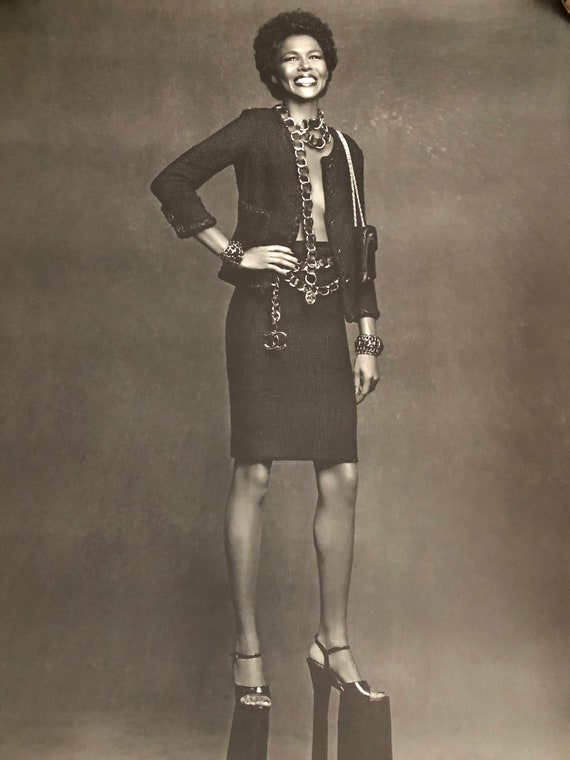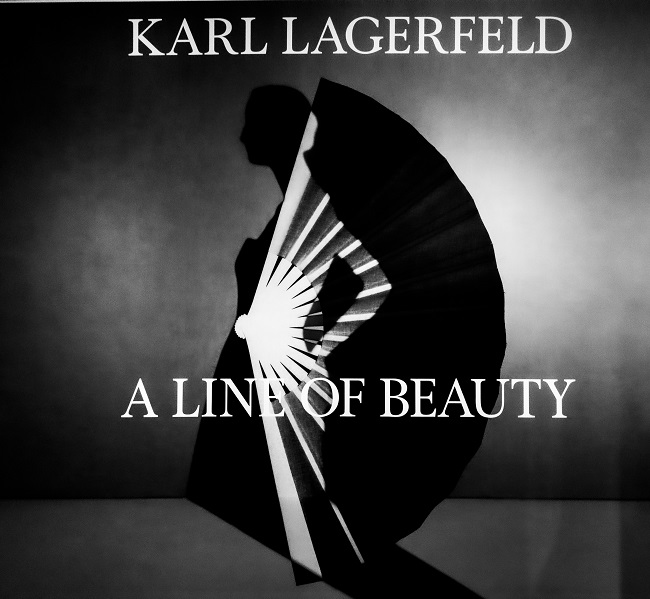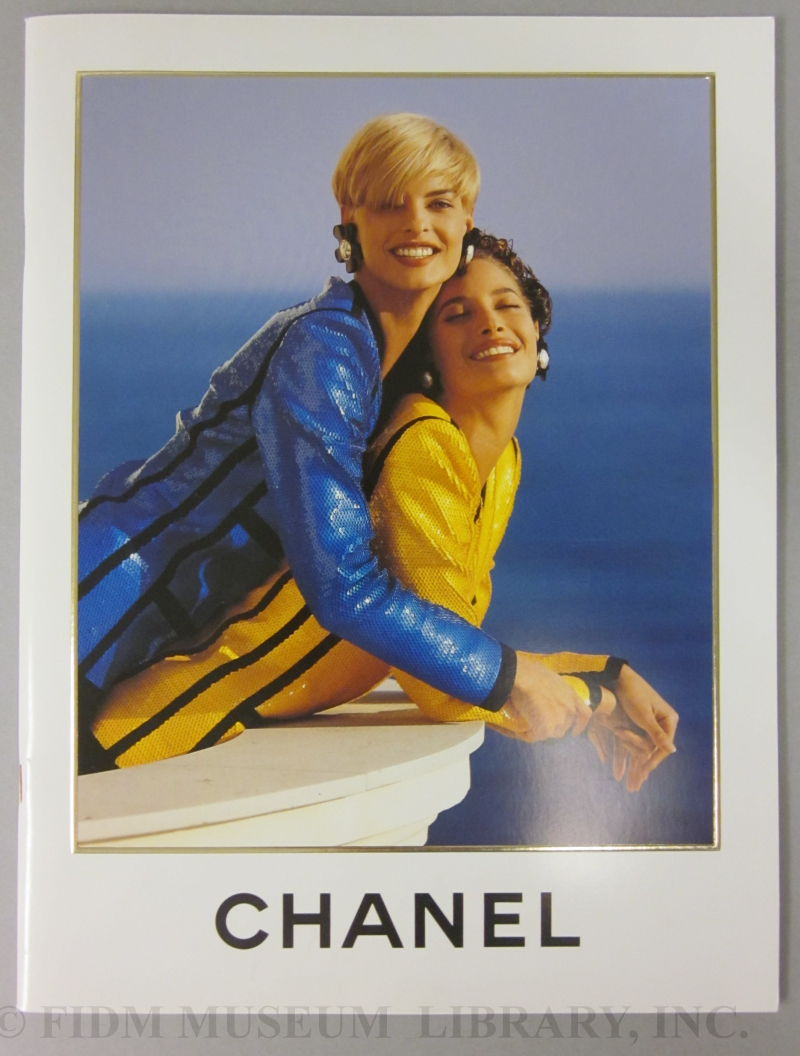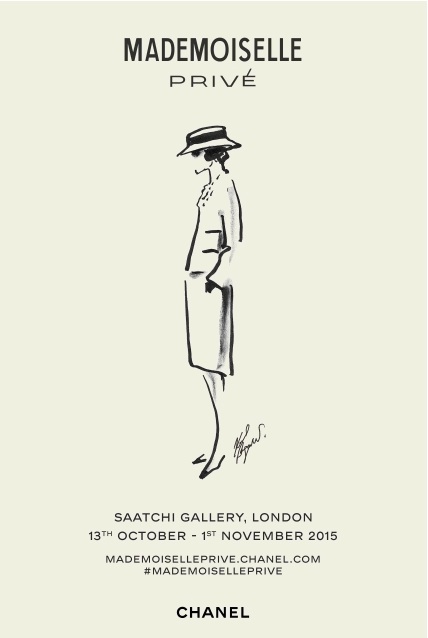Photographer___Karl Lagerfeld, Exhibition___Chanel - The Little Black Jacket, Model___Ayo, Origin__Berlin, 2012, Size___A1, 84cm x 59 cm,

KARL LAGERFELD - Original poster from the CHANEL exhibition 'The Little Black Jacket' Ayo
An exhibition at the MET in New York highlights the work of fashion designer Karl Lagerfeld, whose influence on French fashion is undeniable.

Photo Essay: Karl Lagerfeld at the MET in New York - France Today

EXHIBITION POSTER Mademoiselle privée Gallery Saatchi …
Dark glasses, ponytail, and a crisp starched collar: even for those outside of the fashion industry, designer Karl Lagerfeld (1933 - 2019) was an immediately recognizable self-made icon. Known for his acerbic wit (quoted eagerly in the press) and irreverent attitude, Lagerfeld was the definition of a Renaissance man. His relentless curiosity and quest for knowledge, dedication to art and literature, and voracious collecting - the amassed books in one of his homes is said to have stretched over three miles long[1] - set him apart, but it was his innate understanding of culture and “ability to identify, articulate, and frequently anticipate changes in the zeitgeist”[2] that defined his spectacular career. Lagerfeld’s work for top fashion houses such as Chloé, Fendi, and Chanel proved his creative dexterity, and more importantly demonstrated how to keep fashion (and brand names) relevant over decades of collections: “If all the world changes, you have to change your designs, too.”[3] Karl Lagerfeld on the Chanel Couture runwayS/S 1993Photograph by Michel ArnaudGift of Arnaud Associates, SC2000.1095.1 Born to a wealthy family in Hamburg, Germany, Lagerfeld often spoke of the influence his strong-willed mother had on his childhood. It was she who encouraged him to read and converse cleverly from a young age – by his account, his quick and forceful manner of speaking was a by-product of her impatience with listening to his youthful tales.[4] He was perpetually fascinated with fashion, and as a teenager moved to Paris to pursue the field; he got his start at age 21 when he won the 1954 International Wool Secretariat competition in the coat category (18 year old Yves Saint Laurent famously won the same year in the dress category). The competition led to Lagerfeld’s hiring at the couture house of Pierre Balmain, where he stayed for three years before moving to Jean Patou for five years.[5] Enticed by the refreshingly rebellious attitude of ready-to-wear in the 1960s, he left the world of couture to act as a freelance designer for youthful, chic brands including Krizia, Charles Jourdan, and Tiziani. Evening ensemble on display in Capturing the Catwalk (2018)Karl Lagerfeld for Chloé, S/S 1984FIDM Museum Purchase2009.5.8A-C It was at Chloé, a French house known for its romantic, bohemian aesthetic, that Lagerfeld learned to become “the shape-shifter”[6] – a designer capable of adjusting his collections to suit the cultural climate. Art nouveau references alternated with outrageous trompe l’oeil surrealist embellishment (as seen in his final S/S 1984 collection, an homage to dressmaking). After working with the house for a decade, Lagerfeld was named the head designer in 1974, a position he held until 1983 – though he returned for a brief period in the mid-nineties to inject his signature brazenness back into the brand. His mantra at Chloé, and perhaps throughout his career, was that “Fashion does not have to prove that it is serious. It is the proof that intelligent frivolity can be something creative and positive.”[7] In the meantime, Lagerfeld had maintained a close relationship with the Italian house Fendi since 1965; he was still designing as Creative Director at the time of his death. Lagerfeld was responsible for creating Fendi’s signature “FF” logo, foreshadowing his frequent use of the interlocking double C’s during his time at Chanel. He has said that the double F’s stood for Fendi Fun, Fendi Fur, or Fun Fur, depending on the interview – either way, the logo was undoubtedly a nod to Lagerfeld and Fendi’s inventive (if controversial) use of fur in ready-to-wear. Evening ensembleKarl Lagerfeld for Chanel, 1994-1997Gift of Mrs. Alfred BloomingdaleS2010.116.1A-D Cocktail dress on display in Capturing the Catwalk (2018)Karl Lagerfeld for Chanel, 1985FIDM Museum Purchase: Funds generously donated by Barbara Bundy2006.37.4

The Legacy of Karl Lagerfeld - FIDM Museum
Did you know that every 30 seconds, somewhere in the world someone buys a bottle of Chanel no 5 perfume? Or, that no 5 was Gabrielle 'Coco' Chanel's lucky number? These and other facts are part of the long awaited 'The Chanel Legend' exhibition in the Gemeentemuseum of The Hague, opening today October 12, 2013.…

30s Magazine - The Chanel Legend exhibition

Two Karl Lagerfeld photo collages, Zwei Karl Lagerfeld Fotocollagen, KARL, Karl Lagerfeld's Estate Online III, 2022

American Marketer
More than 1,000 lots, including three Rolls Royce cars and 200 pairs of his signature fingerless leather gloves, will be offered across a series of sales at Sotheby’s

Late Fashion Icon Karl Lagerfeld's Personal Collection to be Auctioned
Lagerfeld made the brand so iconic and inclusive that it was easy to forget everything that was problematic about Chanel herself, writes a fashion historian.

Chanel had a complicated relationship with Jews — until Karl Lagerfeld showed up – The Forward
